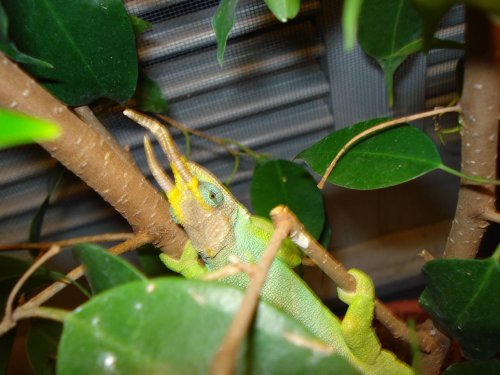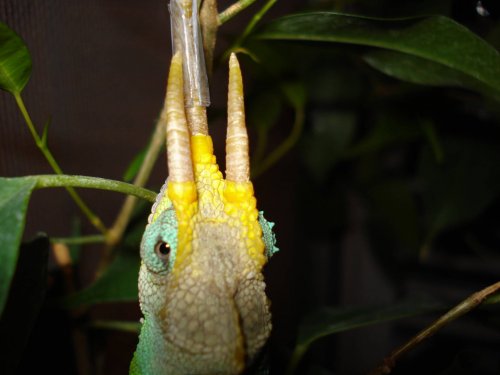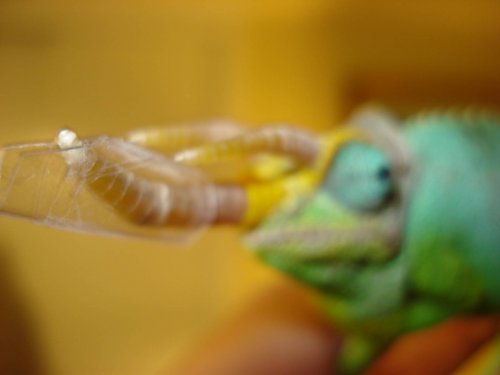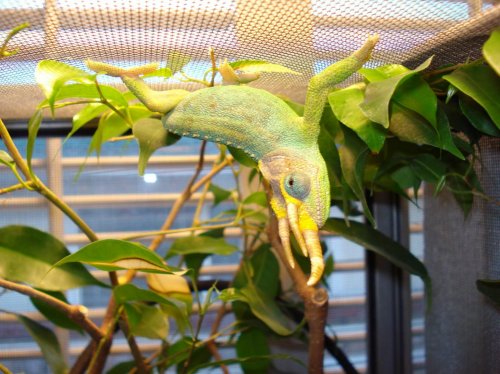Edward Kim
Established Member
Had a clutch of C. meru's ~ a year ago. All of them sold but one, due to a bent nostral horn (possibly caused by an improper shed). I would have let the horn grow out naturally, but noticed that it was bending toward the left horn. So I fashioned a plastic brace that essentially stressed the horn straight. Interestingly it work.









